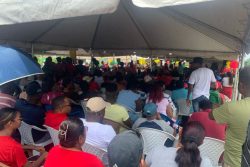A weekly column prepared by Dr. Balwant Singh’s Hospital Inc.
Endoscopy
By Dr Ajay Gupta, MS (General & Laparoscopic Surgeon)
Endoscopy is a diagnostic medical procedure that is used to assess the interior surfaces of an organ by inserting a tube into the body. The instrument usually has a flexible ‘telescope’ to provide an image of the foodpipe , the stomach and the bowels. The commonly used types of endoscopy in digestive system are:
1. Upper gastrointestinal endoscopy
2. Colonoscopy
Upper gastrointestinal endoscopy
Upper gastrointestinal endoscopy enables the physician to look inside the foodpipe, stomach, and the upper intestines.
Indications
Diagnostic
Unexplained anaemia (usually along with a colonoscopy) Upper gastrointestinal bleeding as evidenced by vomiting blood or passing black stools. Persistent upper abdominal pain with indigestion in patients over the age of 40-45 years.
Heartburn and chronic acid reflux – this can lead to a precancerous lesion.
Persistent vomiting
Difficulty in swallowing
Painful swallowing
Biopsy of lesion found on other investigations like x-ray, CT scan.
Retrieval of foreign bodies that have been swallowed
Dilating or putting a stent in the foodpipe
Procedure
You will be kept fasting for at least 4-6 hours before the procedure. For the procedure you will swallow a thin, flexible, lighted tube. Right before the procedure, the physician would spray your throat with an anaesthetic that may help to prevent gagging. You will lie on your left side with the head resting comfortably on a pillow. A mouth-guard is placed between the teeth, partly to protect your teeth as well as the endoscope. The endoscope is then passed over the tongue and into the throat. This is the most uncomfortable stage for the patient. The endoscope is gradually advanced down the foodpipe making note of any abnormality.
If any pathology or lesion is seen, a biopsy can be taken at the same time. Small biopsies can be made with a pincer (biopsy forceps) which is passed through the scope. The intestinal mucosa heals quickly from such biopsies.
Biopsy allows the pathologist to examine the tissue for any abnormality or disease process.
Complications
The complication rate is about 1 in 1000. They include:
Vomiting and aspiration into lungs (more common in sedated patients).
Bleeding
Perforation
Colonoscopy
Colonoscopy is the endoscopic examination of the large colon and the distal part of the small bowel with a flexible tube passed through the anus. It allows a doctor to look inside the entire large intestine. The procedure enables the physician to see things such as inflamed tissue, abnormal growths, and ulcers. It is most often used to look for early signs of cancer in the colon and rectum. It is also used to look for causes of unexplained changes in bowel habits and to evaluate symptoms like abdominal pain, rectal bleeding, and weight loss.
Indications
Colon cancer
Blood in stool
Unexplained changes in bowel habit or suspicion of cancer
Inflammatory bowel disease
Due to the high mortality associated with colon cancer and the high effectivity and low risks associated with colonoscopy, it is now also becoming a routine screening test for people 50 years of age or older.
Preparation
The colon must be free of faecal matter for the test to be performed properly. For one to three days, you are required to follow a low fibre or clear-fluid diet. The day before the colonoscopy, you will be given a laxative which would aid in emptying your whole bowel. Since the goal of the preparation is to clear the colon of solid matter, you should plan to spend the day at home in comfortable surroundings with ready access to toilet facilities.
You will be asked to skip aspirin and aspirin-like products such as over the counter painkillers, and similar medications for up to ten days before the procedure to avoid the risk of bleeding during the procedure if a biopsy is taken. A blood test may be performed before the procedure.
Procedure
During the procedure you may be given sedation intravenously.
For the colonoscopy, you will lie on your left side on the examining table. The doctor and a nurse will monitor your vital signs, look for any signs of discomfort, and make the required adjustments to make you, as well as the doctor comfortable.
The doctor will then insert a long, flexible, lighted tube into your rectum and slowly guide it into your colon. The telescope camera transmits an image of the inside of the large bowel onto a video screen, which enables the doctor to carefully examine the lining of the large bowel.
You may be asked to change positions at times so the doctor can more easily move the scope to see properly the different parts of your colon. The scope blows air into your colon and inflates it, which helps give the doctor a better view. A closer visual inspection is then often performed upon withdrawal of the endoscope. Biopsies are frequently taken for microscopic examination if any abnormality is found.
After the procedure, if the sedatives are used, some recovery time is usually given before allowing the patient to go home.
Complications
Bout of flatulence
Minor wind pain, caused by air insufflation into the colon during the procedure
Colon perforation (less than 1 in 2000 colonoscopies)
Bleeding
The endoscopy is a relatively safe and minimal invasive procedure which allows the direct visualization of the gut. It is now commonly used for detecting colon cancers and oesophageal cancers in early stages so that they could be dealt at an earlier stage, with an intention of full cure.






